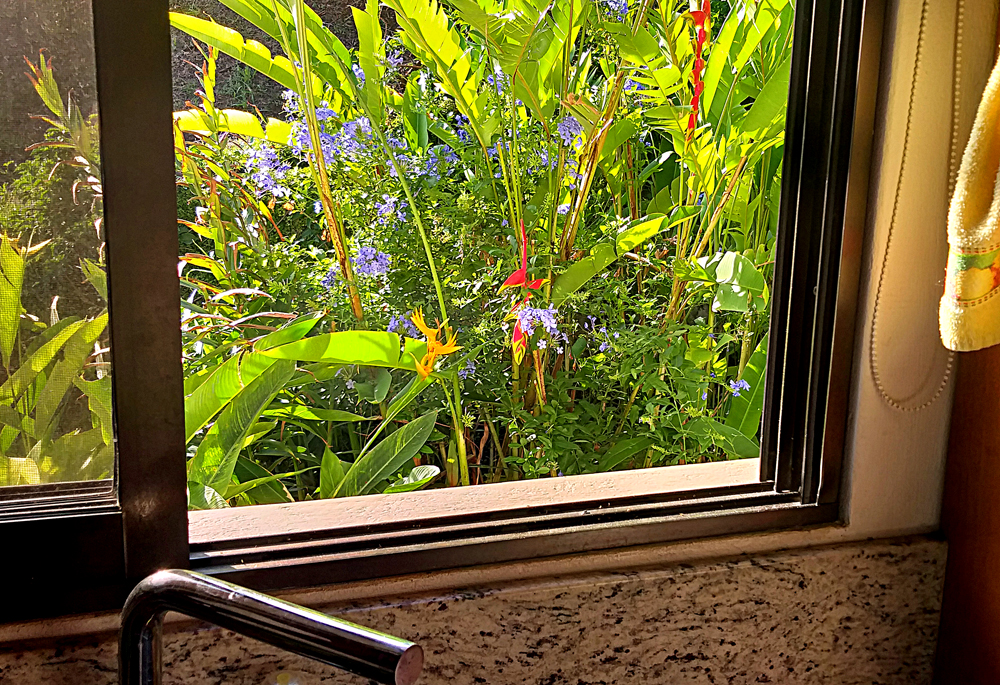
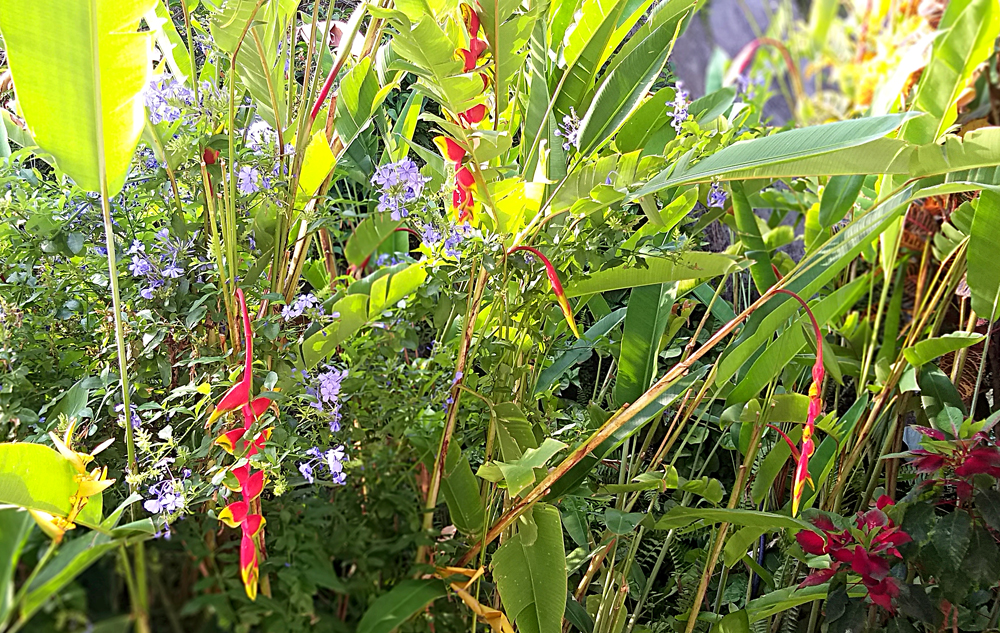
See more in My Home Garden GALLERY.
¡Pura Vida!


See more in My Home Garden GALLERY.
¡Pura Vida!
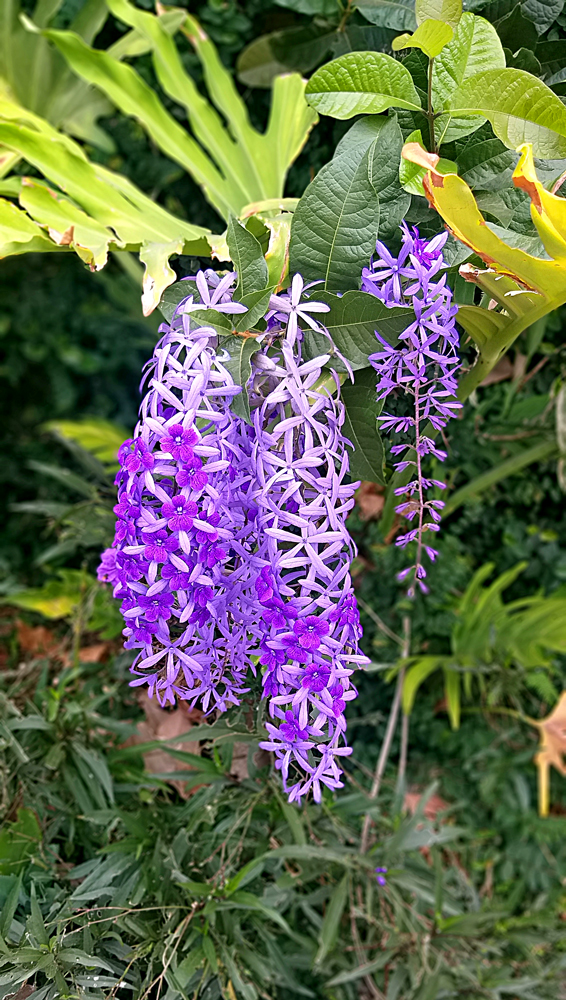
The Petrea volubilis , Machiguá or Flor de Santa Lucía (Wikipedia link) is a tropical evergreen vine found in Mexico and Central America. And it is just one more of many exoctic flowers I’ve discovered on my walks to town, popping up in some neighbor’s garden! Some, like this, take a bit of searching on the internet to identify, but rewarding to do so. Then I ask my gardener for one and he says, “What!?” 🙂
This tropical vine in the verbena family is further described by the North Carolina Extension Gardener. And interestingly by the Singapore National Parks. They also use the common names of: Sandpaper Vine, Queen’s Wreath, and Purple Wreath. Fun to see, but most of these exoctics I never get to grow. 🙂
¡Pura Vida!
The bud of this particular heliconia is almost like a different flower from the fully opened Heliconia and it is one of my favorite. Plus the edge of a Plumbago behind it just adds a hint of contrast to accentuate the brilliant colors.
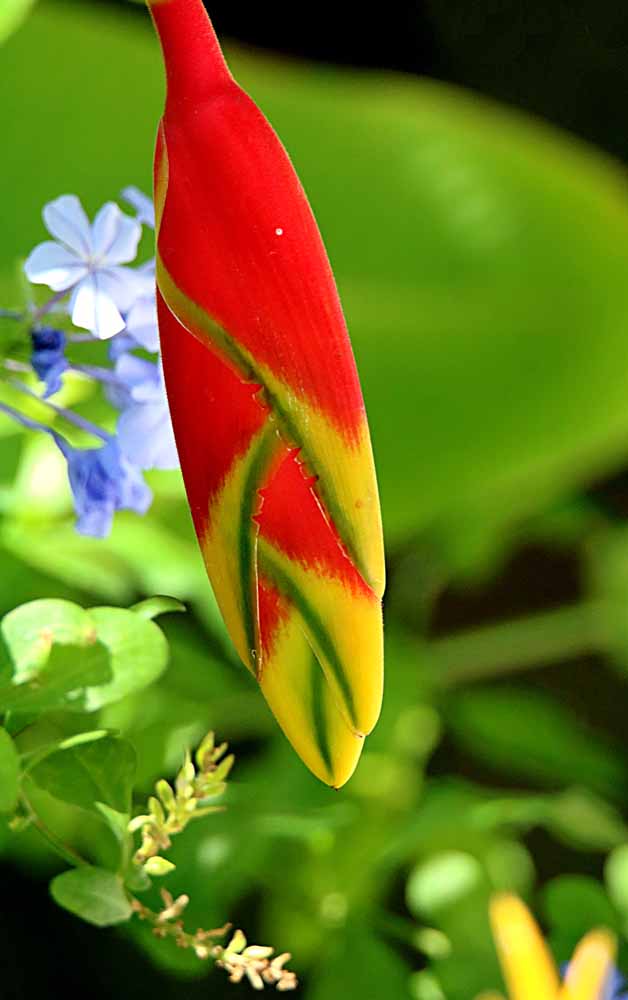
¡Pura Vida!
And notice that one of the computer-generated “Related” blog posts featured below has the fully bloomed Heliconia, also with a Plumbago contrasting it! 🙂 Or see My Garden Gallery photos.
“I’ve seen a jillion miracles. They’re all around. Every green leaf is a miracle.”
– Jimmy Dean
And I’m back to doing blog posts from my little casita garden for a while now . . .
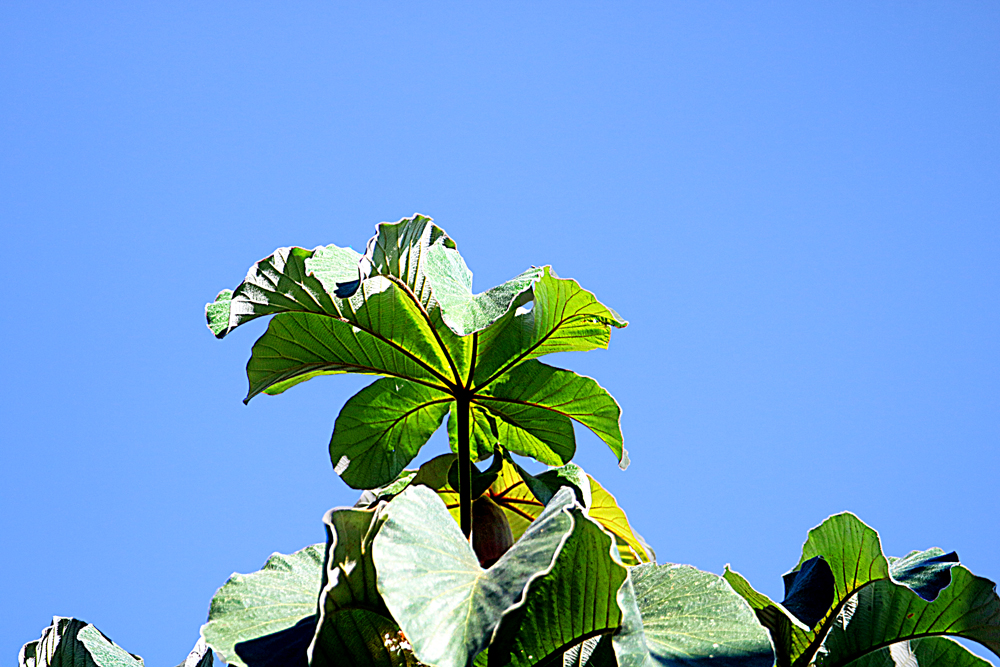
“Miracles are a retelling in small letters of the very same story which is written across the whole world in letters too large for some of us to see.”
~C.S. Lewis
Every green leaf is one! 🙂
¡Pura Vida!
Check out my Flora & Forest Galleries!
Two were photographed at Villa Lapas and one in the Carara Park, but both are a part of the same transitional rainforest in the lowlands of Rio Tarcoles, along the Pacific Coast, just an hour’s drive from where I live in Atenas.
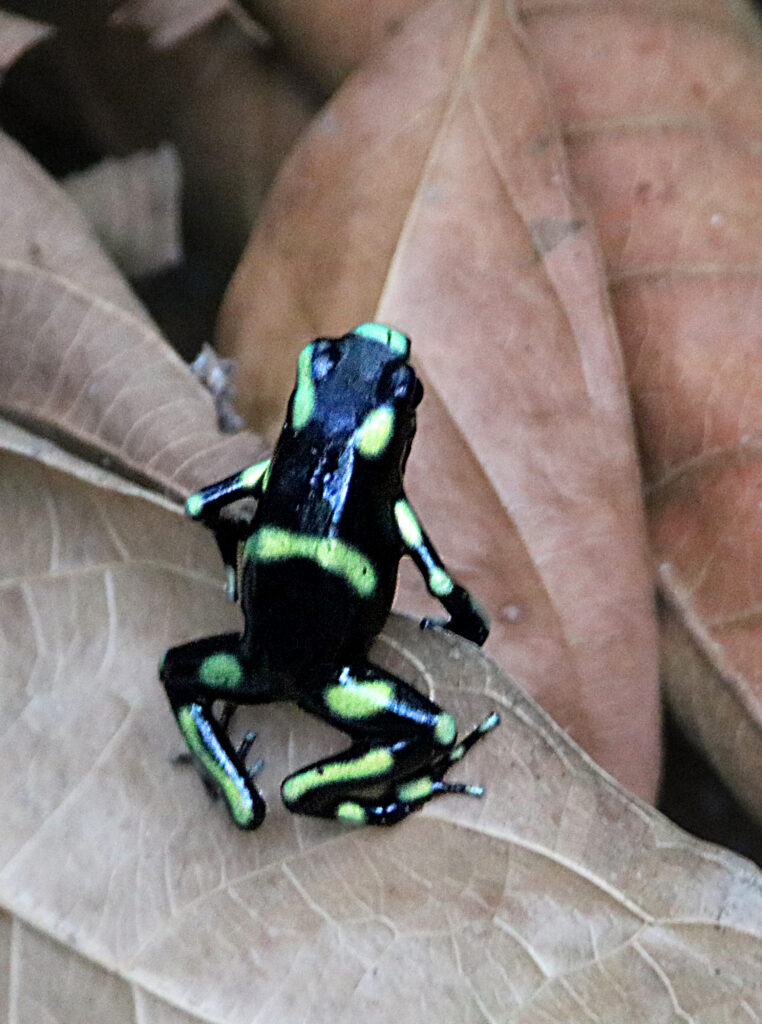
The next day after photographing them the gardeners cut them down with their weed eaters! 🙂 And NOTE for those receiving this as an email: All blog posts received in an email are BEST SEEN AND READ ONLINE by clicking the title above. Some design features are not carried over to the email version.
The first photo is a yellow & white daisy-like tiny flower that does attract the tiny butterflies and the second is some kind of whitish puff ball with a separate flower bud in front of it. The bud is probably of the same species as the yellow & white flower pictured, since it was close by. Even weeds have a beauty that can be photographed and several of my butterfly photos include such “weed flowers” never mentioned! 🙂
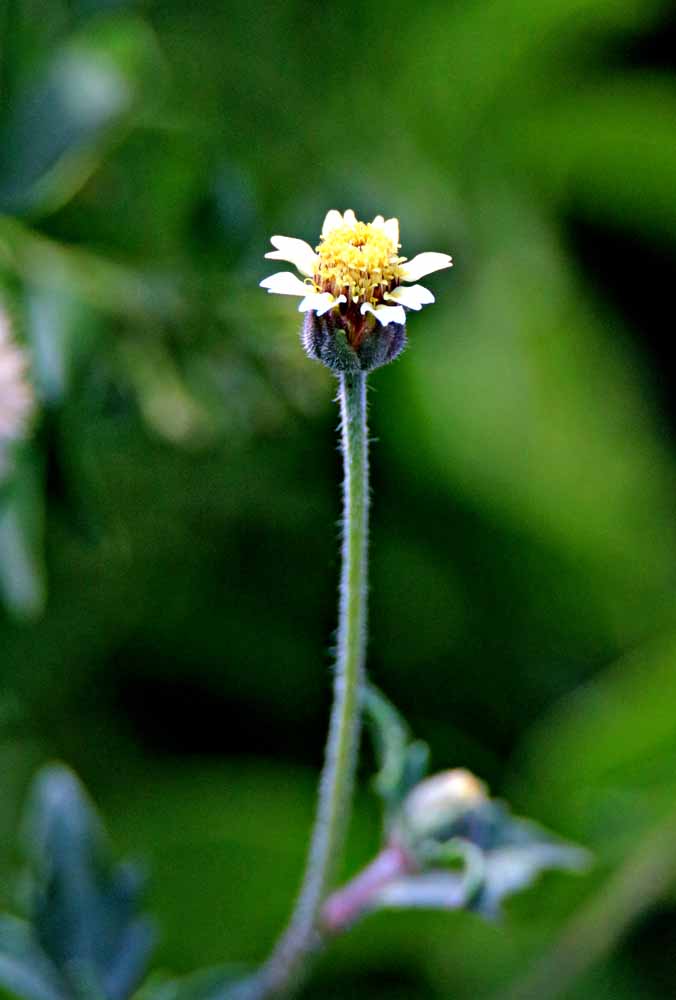
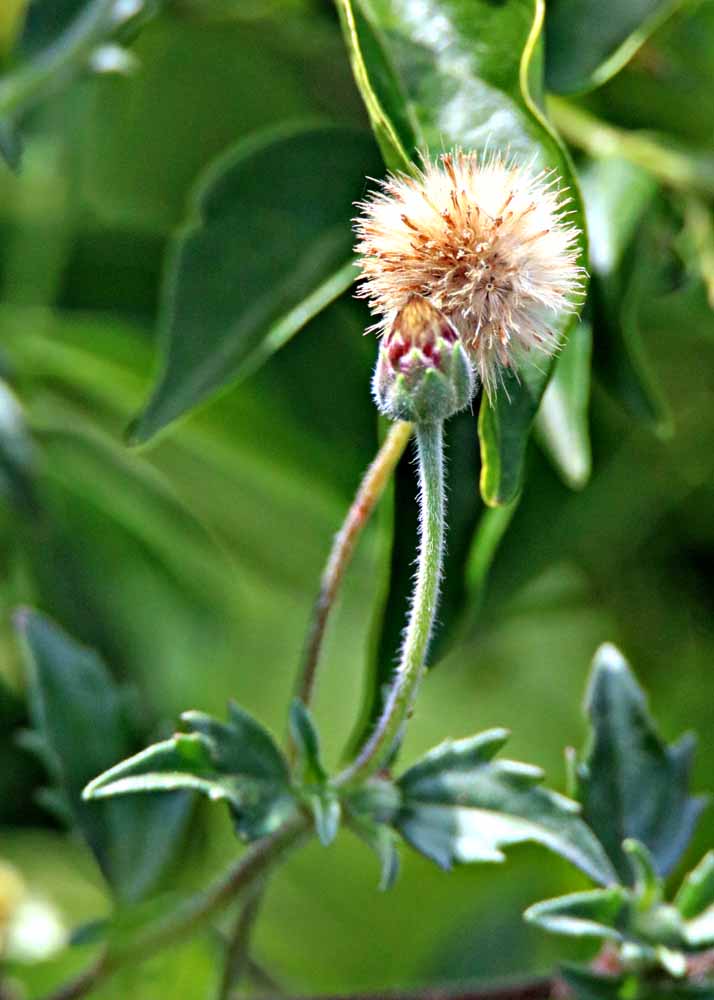
For more plant photos, browse through my Flora & Forest Galleries.
¡Pura Vida!
What I can find online (Wikipedia link) about this plant is that it is in the genus of Physalis, with “approximately 75 to 90 flowering plant species in the nightshade family (Solanaceae), which are native to the Americas and Australasia.” ~says Wikipedia
Variously call Chinese Lantern, Japanese Lantern, Bladder Cherry, Ground Cherry, Tomatillo (a red or gold fruit grows inside the lantern or bladder). I have seen them in other parts of Costa Rica and finally tried to research online. I won’t venture to guess which of the up to 90 species this particular plant is. 🙂
I made these 2 photos across the driveway from my garden, on my landlord’s property where they appear to be a wild vine climbing up another plant. I hope to eventually learn more about them. These two shots seem to show them at different stages of development.
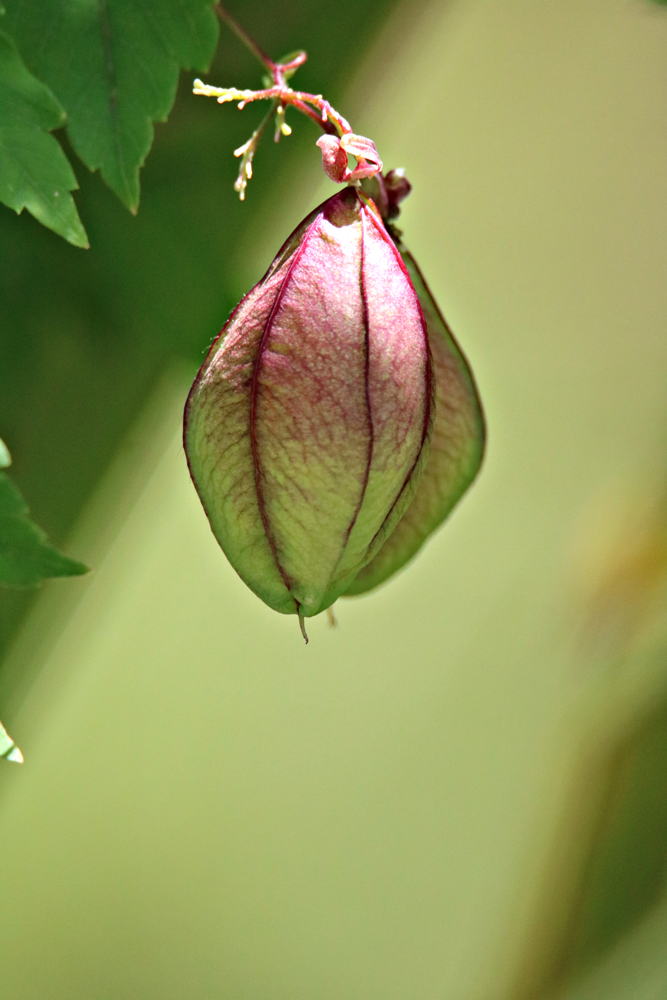
To be so windy and the lesser time of year for butterflies, I keep being amazed at the number of new butterflies I find in my garden, mostly the tiny ones. Depending on my source of information, this one has two common names, Halcyon Hairstreak or the one I have to use: Halciones Hairstreak with all sources using the same scientific name of Ostrinotes halciones. All Hairstreaks have that wiry tail to make predators think it is the head.
This species is found in both Central and South America from Mexico to Brazil, but my photo will be the first on butterflies and moths dot org, if they add the species that I’ve requested. I have about 5 requests waiting to be approved like that. The huge number of species of everything in Costa Rica continues to amaze me! It is one of the most diverse locations on the planet! The exact middle location between North & South America. I’m posting 4 photos of this new-to-me species . . .
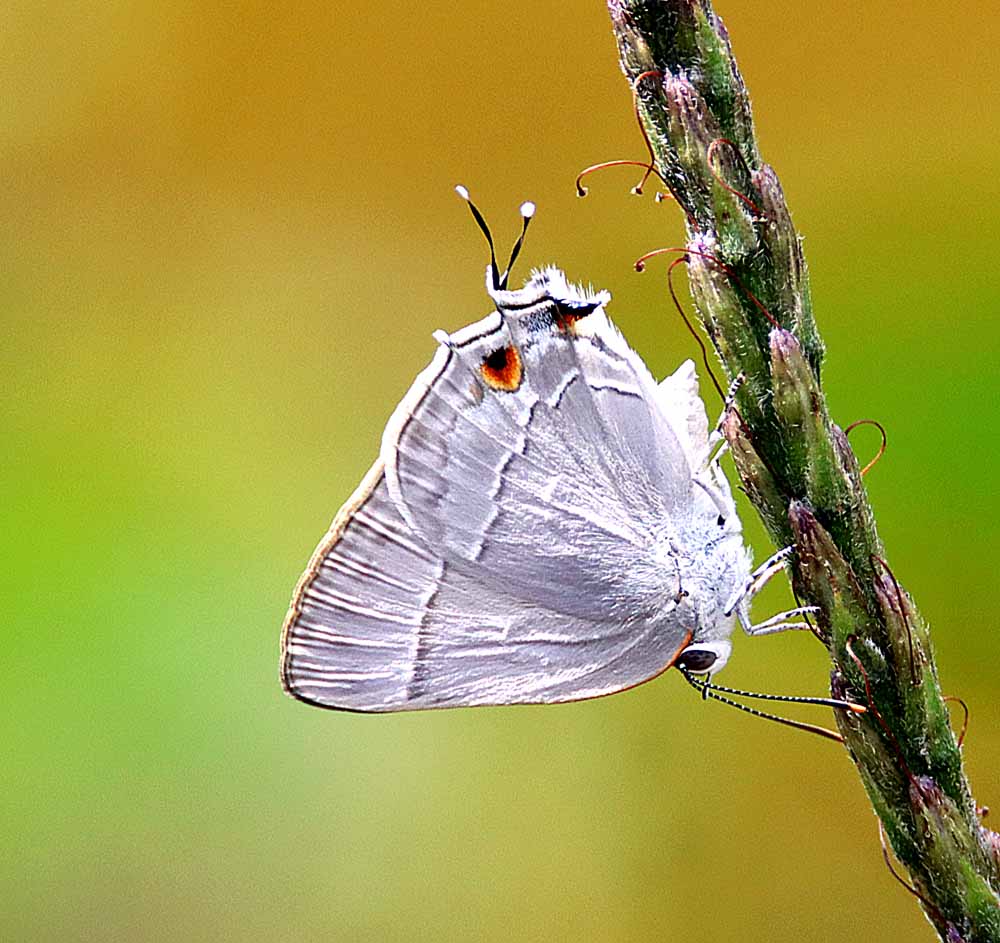
There are not many flowers more different from each other than this Heliconia and the Desert Rose in my garden that I snapped the other day while looking for butterflies. The Heliconia is so typical of Costa Rica, found from coast to coast, mainly in tropical lowlands but also other places. While the Desert Rose is a specialty pot plant rather atypical of Costa Rica that I got from my old friend and neighbor Anthony, years ago when he returned to the states. Since he has now died, it is sort of a living memorial to him. It’s rather delicate, requiring morning sun only and not too much water to keep blooming. It’s a faithful favorite for me!
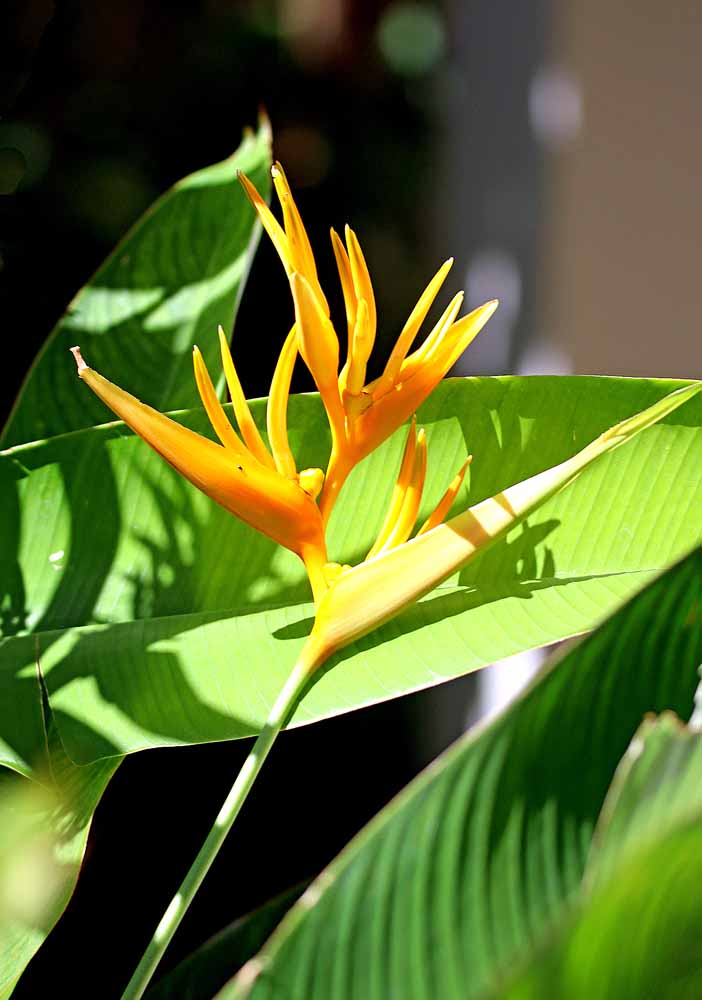
And 2 shots of the Desert Rose . . .
Continue reading “2 Contrasting Flowers”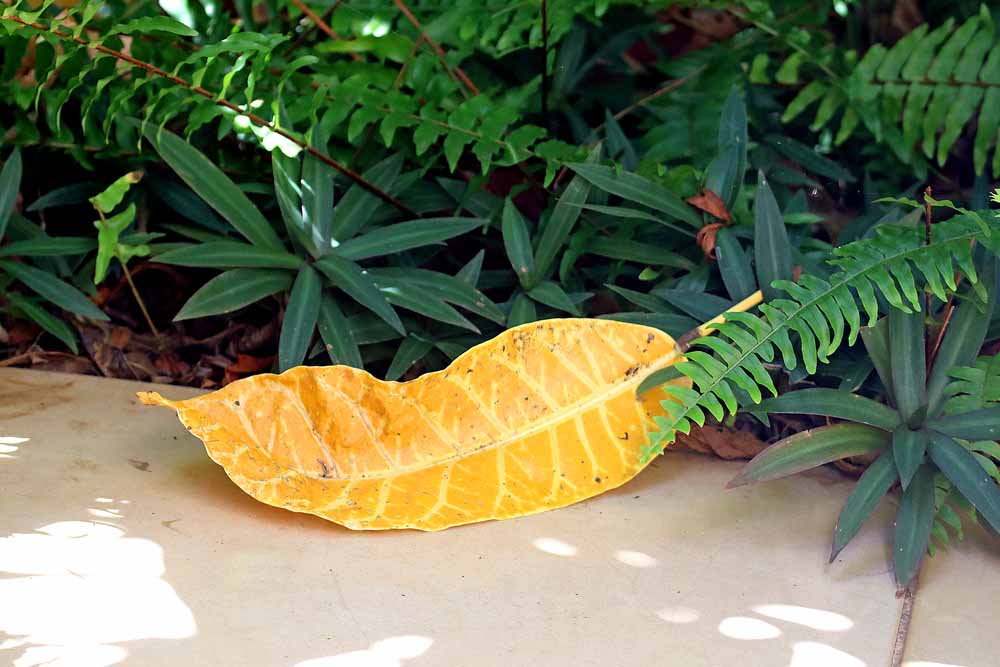
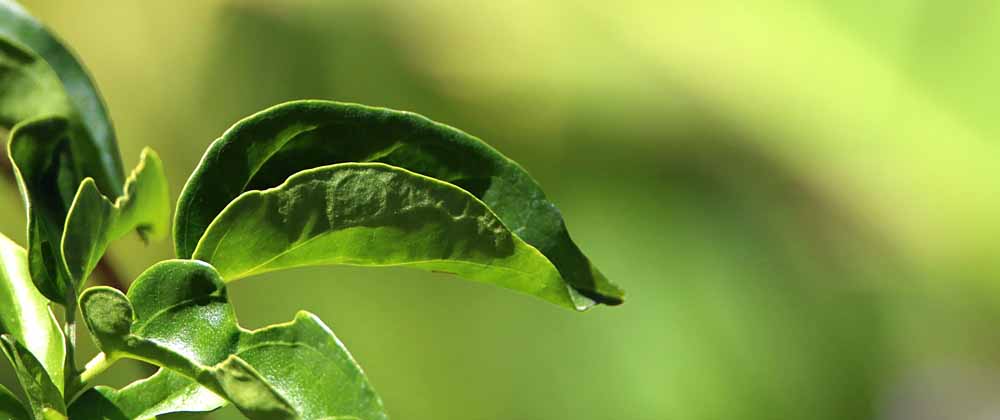
Flora & Forest GALLERIES.
Leaves & Nature Things GALLERY
¡Pura Vida!